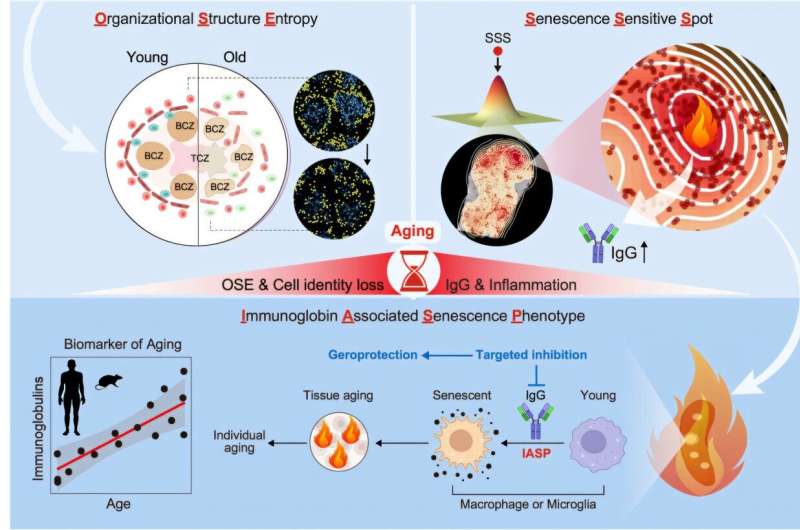Chinese Scientists Unveil Aging Mechanisms Linked to Immunoglobulins

Beijing, November 5, 2024 - In a groundbreaking study published in the prestigious journal Cell, scientists from the Chinese Academy of Sciences and BGI Research have detailed how immunoglobulins play a critical role in the aging process, potentially revolutionizing the understanding of gerontology.
The collaborative research, led by teams from various institutes under CAS and BGI, has produced a comprehensive spatial transcriptomic map of aging across nine organs in male mice. This map, termed Gerontological Geography (GG), highlights the universal signs of aging such as tissue structural disorder and the loss of cellular identity.
Professor Liu Guanghui, one of the study's lead authors, explained, "Our findings pinpoint the epicenters of aging within multiple organs and reveal the accumulation of immunoglobulins as both a characteristic and driver of aging."
The study utilized a novel approach known as organizational structure entropy (OSE) analysis to show that increased spatial disorder and loss of cellular identity are pervasive in aging organs. They identified specific 'senescence-sensitive spots' (SSS) where these effects are most pronounced, suggesting these areas could be the focal points for organ aging.
Particularly in immune organs, the research team found that plasma cells, which synthesize antibodies, are central to the SSS microenvironment. An increase in immunoglobulin-related gene expression was noted around these spots. Moreover, the study revealed that immunoglobulin G (IgG) not only accumulates in aging tissues but also directly induces aging in immune cells like macrophages and microglia, releasing inflammatory factors.
In an experimental twist, the researchers injected IgG into young mice, which accelerated aging across various tissues, showcasing IgG's significant impact on aging.
Looking towards therapeutic avenues, the team has developed an intervention using antisense oligonucleotides (ASO) to reduce IgG levels in tissues, which showed promise in delaying aging in multiple organs of mice.
"This study is the first to map the spatial transcriptome of pan-organ aging in mammals," said Professor Liu, "and it proposes the Immunoglobulin-associated Senescence Phenotype (IASP) as a new frontier in aging research."
The implications of this research extend beyond understanding aging; it opens new pathways for interventions aimed at delaying aging and preventing age-related diseases. The findings suggest that monitoring and possibly managing IgG levels could become a new strategy in geriatric medicine.
The study, published on November 4, 2024, in Cell, marks a significant leap in our understanding of the biological underpinnings of aging, potentially guiding future research and treatments.
Journal Information:
Cell (2024). DOI: 10.1016/j.cell.2024.10.019
Credit:
Cell (2024).
